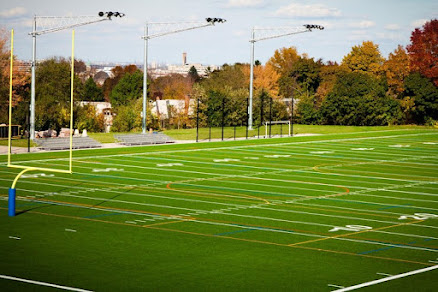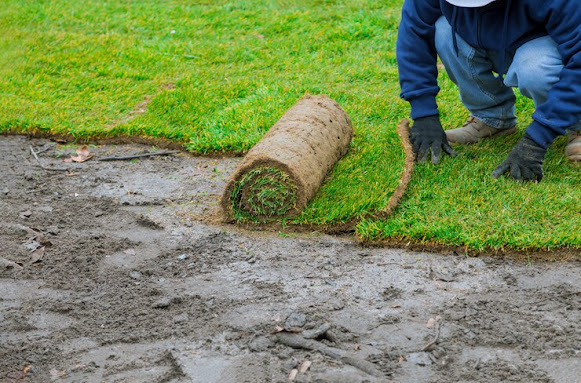Can You Put Landscape Fabric on Wet Ground?
Can you put landscape fabric on wet ground? It is possible, but it’s not ideal. Wet soil can make the fabric slip, wrinkle, or fail to stay in place. It’s better to wait until the ground is slightly moist but not soaked. This ensures the fabric lies flat and installs securely. Proper installation on drier soil gives better, long-lasting results. At Lakota Design Group, we’ve guided countless clients through landscaping challenges, including when and how to install fabric correctly. In this blog, we’ll dive deep into whether wet soil is suitable, the risks it poses, and the best practices to ensure a long-lasting, professional finish.
Why Ground Conditions Matter for Landscape Fabric
Landscape fabric acts as a weed barrier, but it doesn’t work well if the soil beneath it isn’t prepared properly. Wet soil can compact unevenly and create long-term problems for your garden. When asking “Should fabric be installed on damp soil?”, the short answer is yes—but with some caution. Slightly moist soil can be fine, but heavily saturated ground creates drainage problems and can trap excess moisture under the fabric.
Risks of Using Wet Soil
Poor Drainage: Waterlogged soil under fabric may lead to root rot for plants.
Weed Growth: Dampness can encourage certain weeds to germinate through seams.
Soil Shifting: Wet ground shifts more easily, causing your fabric to wrinkle or move.
Shorter Fabric Life: Constant dampness can degrade the material faster.
Can You Lay Fabric After Rain or Irrigation?
How To Lay Landscape Fabric is one of the most common questions homeowners and garden enthusiasts ask when looking to create low-maintenance outdoor spaces. While this material helps prevent weeds, retain soil structure, and improve the overall look of your yard, timing and ground condition matter a lot. One key concern is whether you can install landscape fabric on wet ground.At Lakota Design Group, our professionals usually recommend checking the soil by stepping on it—if your footprint fills with water or mud, it’s too wet. Waiting ensures that the soil stabilizes, giving your fabric a secure base to sit on.
Problems With Installing Fabric on Wet Ground
If you rush to lay fabric over saturated soil, several problems can occur:
Fabric Wrinkling – Wet ground shrinks as it dries, pulling the fabric and creating gaps.
Moisture Trapping – Trapped water under the barrier may encourage mold growth.
Plant Health Issues – Roots planted above waterlogged soil may suffocate.
Unstable Base for Coverings – Whether you add mulch, decorative rocks, or other coverings, the uneven base causes them to shift.
This is why many landscape experts—including Lakota Design Group—advise that patience pays off when preparing the soil.
Best Soil Condition Before Laying Fabric
So, what is the best soil condition before laying fabric? The answer lies in balance: the ground should be firm but not hard, moist but not soggy. The goal is to create a smooth, even surface without excess water.
Steps for Preparing Ideal Soil Conditions:
Remove Weeds and Debris: Pull out weeds and clear any leftover roots.
Lightly Moisten Soil: Slight moisture helps with compaction and leveling.
Rake Smooth: Flatten bumps and create an even base.
Check Drainage: Make sure water flows away from the area naturally.
This preparation ensures your fabric performs as intended and your coverings—whether mulch or rock—look neat and stay in place.
What Covering Goes Above Weed Barrier?
After laying fabric, the next question is: “What covering goes above weed barrier?” The most common choices are:
Mulch: Organic mulches like bark, wood chips, or pine straw are popular. If you’re wondering about the best mulch to use over landscaping fabric, choose hardwood mulch since it lasts longer and resists decay.
Decorative Rock Topping for Fabric: Stones, gravel, or river rock are great long-term options for durability and style.
Soil: Some homeowners ask, “Can I add soil on top of fabric?” While possible, it’s not always recommended. Soil can create a new bed for weeds on top of the barrier, defeating its purpose.
In fact, when planning landscape design San Jose, professionals often prefer decorative rocks because they’re durable, low-maintenance, and stylish.
Should Fabric Be Installed on Damp Soil?
Let’s revisit this question because it’s crucial. Slightly damp soil is okay—it helps hold the fabric in place while you secure it with pins or staples. But heavy wetness leads to the problems with installing fabric on wet ground that we covered earlier.
In practical terms:
Damp Soil = Acceptable (easier to work with).
Wet/Waterlogged Soil = Not recommended (wait until it dries).
When designing outdoor spaces, landscape design San Jose specialists often check the soil moisture before proceeding. This simple step saves homeowners from future headaches.
Laying Fabric After Rain or Irrigation: Practical Tips
If you must install fabric shortly after rain or watering, here are some tips:
Wait until the soil is damp, not muddy.
Test with a small section of fabric first.
Use extra staples to keep the fabric from shifting while the soil dries.
Avoid adding heavy toppings like rock until the base is fully stable.
These small adjustments make the difference between a professional-looking project and one that fails prematurely.
How Lakota Design Group Approaches This Challenge
At Lakota Design Group, we’ve installed landscape fabric in various soil conditions across residential and commercial properties. Our approach focuses on soil readiness first, fabric installation second. By preparing the base properly, we ensure coverings like mulch or decorative rock stay intact and attractive for years.
We also emphasize long-term solutions rather than quick fixes. For example, we advise clients against adding soil directly on top of fabric, since it undermines the weed barrier’s purpose. Instead, we guide them toward the right what covering goes above weed barrier options to match their landscape style and needs.
Final Thoughts
Installing landscape fabric on wet ground may sound convenient if you’re eager to finish your yard project, but it often creates more problems than it solves. The best soil condition before laying fabric is firm, lightly moist, and free of standing water. This ensures your barrier works effectively and that your chosen topping—whether mulch or decorative rock topping for fabric—lasts for years.
If you’re ready to take the stress out of landscaping and get professional results, contact us at Lakota Design Group. We’ll help you create a functional, weed-free, and beautiful outdoor space that lasts.
FAQs
1. Can I install fabric right after heavy rain?
It’s better to wait until the soil dries to a damp—not muddy—state. Installing fabric too soon may trap moisture and cause mold issues.
2. Will mulch work better than decorative rock over fabric?
Both have benefits. Mulch is organic and improves soil health, while decorative rock topping for fabric is long-lasting and low-maintenance.
3. What happens if I add soil on top of landscape fabric?
While possible, adding soil on top of fabric can create a new environment for weeds to grow. Instead, consider mulch or rock as the best coverings.


Comments
Post a Comment